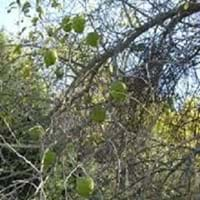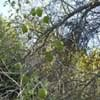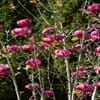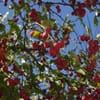Life Span
Perennial
Perennial
Type
Tree
Bulb or Corm or Tuber
Origin
Southeastern United States, South-Central United States, Texas
South America, Argentina
Types
Not Available
Not Available
Habitat
Grassland, Hillside, Humid climates, Roadsides, Woods
Temperate Regions
USDA Hardiness Zone
4-10
5-9
Sunset Zone
2a, 2b, 3a, 10, 11, 12, 13
21,22
Habit
Oval or Rounded
Clump-Forming
Flower Color
Yellow green
Light Blue, Light Purple, Silver, Sky Blue
Flower Color Modifier
Bicolor
Bicolor
Fruit Color
Green
Not Available
Leaf Color in Spring
Green
Green, Light Green, Gray Green
Leaf Color in Summer
Green
Light Green
Leaf Color in Fall
Yellow, Green, Yellow green
Several shades of Green
Leaf Color in Winter
Not Available
Light Green
Leaf Shape
Ovate
Grass like
Plant Season
Spring, Summer, Fall
Spring
Sunlight
Full Sun, Partial Sun
Full Sun, Partial Sun, Partial shade
Growth Rate
Medium
Medium
Type of Soil
Clay, Loam
Clay, Loam, Sand
The pH of Soil
Acidic, Neutral, Alkaline
Acidic, Neutral, Alkaline
Soil Drainage
Average
Well drained
Bloom Time
Spring, Late Spring
Early Spring, Spring, Late Winter
Tolerances
Soil Compaction
Drought
Where to Plant?
Ground
Container, Ground
How to Plant?
Seedlings, Stem Planting
By dividing rhizomes, tubers
Plant Maintenance
Medium
Medium
Watering Requirements
Do Not over Water, Requires regular watering, Water Deeply, Water when soil is dry
Average Water Needs, Do Not over Water, Requires regular watering
In Summer
Lots of watering
Lots of watering
In Spring
Moderate
Moderate
In Winter
Average Water
Average Water
Soil pH
Acidic, Neutral, Alkaline
Acidic, Neutral, Alkaline
Soil Type
Clay, Loam
Clay, Loam, Sand
Soil Drainage Capacity
Average
Well drained
Sun Exposure
Full Sun, Partial Sun
Full Sun, Partial Sun, Partial shade
Pruning
Remove damaged leaves, Remove dead branches, Remove dead leaves
Remove damaged leaves, Remove dead branches, Remove dead leaves
Fertilizers
All-Purpose Liquid Fertilizer
All-Purpose Liquid Fertilizer
Pests and Diseases
Red blotch
Slugs, Snails
Plant Tolerance
Drought
Drought
Flowers
Insignificant
Showy
Flower Petal Number
Not Available
Single
Fragrant Bark/Stem
Yes
No
Foliage Texture
Medium
Medium
Foliage Sheen
Matte
Matte
Attracts
Not Available
Bees, Birds, Hummingbirds
Allergy
no allergic reactions
Not Available
Aesthetic Uses
Not Used For Aesthetic Purpose
Showy Purposes
Beauty Benefits
Not Available
Not Available
Environmental Uses
Air purification
Air purification
Medicinal Uses
Cancer, Tooth ache, Urinary tract problems
No Medicinal Use
Part of Plant Used
Bark, Flowers, Fruits
Flowers
Other Uses
Used as an insecticide, Wood log is used in making fences
Not Available
Used As Indoor Plant
No
Yes
Used As Outdoor Plant
Yes
Yes
Garden Design
Mixed Border, Shade Trees, Street Trees
Container, Lawns and Turf, Mixed Border, Rock Garden / Wall, Wildflower
Botanical Name
MACLURA pomifera
Ipheion uniflorum
Common Name
Bois d’arc, Hedge Apple, Osage Orange
Spring Starflower, Springstar
In Hindi
ओसेज संतरे
Spring Starflower
In German
Osage Orange
Frühling Borretsch
In French
Osage orange
Spring Starflower
In Spanish
Osage naranja
primavera Flor de estrella
In Greek
Osage Πορτοκαλί
άνοιξη starflower
In Portuguese
Osage laranja
primavera Starflower
In Polish
Osage Pomarańczowy
Wiosna Starflower
In Latin
Aliquam Osage
Spring Starflower
Phylum
Magnoliophyta
Magnoliophyta
Class
Magnoliopsida
Lilopsida
Order
Rosales
Asparagales
Family
Moraceae
Liliaceae
Clade
Angiosperms, Eudicots, Rosids
Angiosperms, Monocots
Subfamily
Not Available
Allioideae
Number of Species
Not Available
Not Available
Season and Care of Osage Orange and Spring Starflower
Season and care of Osage Orange and Spring Starflower is important to know. While considering everything about Osage Orange and Spring Starflower Care, growing season is an essential factor. Osage Orange season is Spring, Summer and Fall and Spring Starflower season is Spring, Summer and Fall. The type of soil for Osage Orange is Clay, Loam and for Spring Starflower is Clay, Loam, Sand while the PH of soil for Osage Orange is Acidic, Neutral, Alkaline and for Spring Starflower is Acidic, Neutral, Alkaline.
Osage Orange and Spring Starflower Physical Information
Osage Orange and Spring Starflower physical information is very important for comparison. Osage Orange height is 760.00 cm and width 1,219.00 cm whereas Spring Starflower height is 10.20 cm and width 5.10 cm. The color specification of Osage Orange and Spring Starflower are as follows:
Osage Orange flower color: Yellow green
Osage Orange leaf color: Green
Spring Starflower flower color: Light Blue, Light Purple, Silver and Sky Blue
- Spring Starflower leaf color: Green, Light Green and Gray Green
Care of Osage Orange and Spring Starflower
Care of Osage Orange and Spring Starflower include pruning, fertilizers, watering etc. Osage Orange pruning is done Remove damaged leaves, Remove dead branches and Remove dead leaves and Spring Starflower pruning is done Remove damaged leaves, Remove dead branches and Remove dead leaves. In summer Osage Orange needs Lots of watering and in winter, it needs Average Water. Whereas, in summer Spring Starflower needs Lots of watering and in winter, it needs Average Water.





